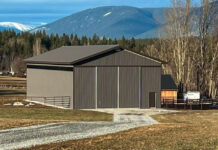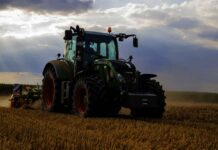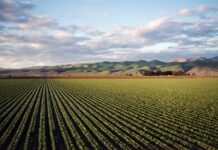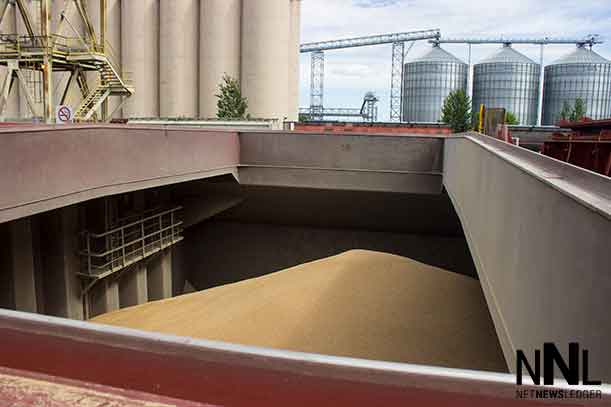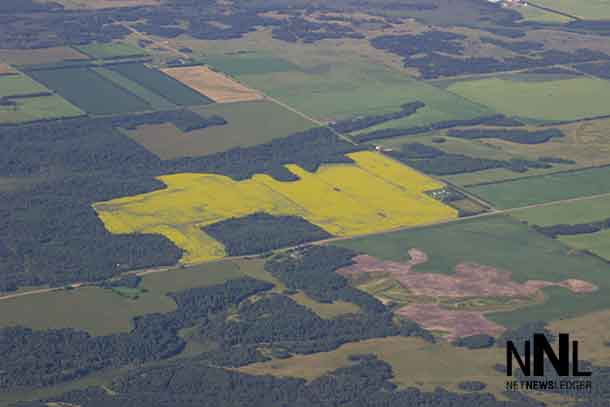
With AI, yields can be improved and grocers can understand consumers – and predict their behaviour – better than consumers know themselves
By Sylvain Charlebois
HALIFAX, N.S. – Living – Many Canadian consumers have noticed that lettuce and celery prices have skyrocketed recently. Such fluctuations happen all the time. But artificial intelligence is about to change that.
AI has us on the cusp of a revolution in how we make decisions and how we manage virtually every aspect of our daily lives. The agrifood sector is not immune. Cognitive technologies will change everything about how we feed ourselves, from the farm to the fork.
The planet will need to provide food for more than 9.7 billion people by the year 2050 – and we can. How agriculture embraces data is changing at an astonishing rate. To increase yields, and to enhance plant and soil science practices, farmers need plenty of data. The average farm in the industrialized world generates a little over 200,000 data points a day. And by 2050, we can expect this number to be well over four million.
To limit energy and waste, farmers will need to know in real time how much fertilizer to apply, and what seed to use and where so they can get the most out of their fields. Farmers need all the help they can get, particularly with climate change and the vagaries of nature.
Canadian farms lag behind those in the U.S. and Europe. But the recent investments in rural connectivity by the federal and provincial governments should help update Canadian farms.
AI will also help ease severe labour shortages in many rural operations. The United Nations predicts that almost 70 per cent of the world population will soon live in urban areas. In Canada, we have exceeded 98 per cent.
With the help of cognitive technologies, many operations can be done remotely. We may be years away from the farmer-less farm but the need to hire more workers could be alleviated. These measures will lead to more consistencies and fewer losses.
And, most important for consumers, retail price fluctuations should be less frequent.
Robotics, machine learning and AI will create key changes in the retail grocery sector. Running stores by gut-feeling is only so effective. The average food store manager deals with more than 50,000 products – six to eight times more than a few decades ago. To optimize any food retail store, a typical management team must make 1,000 to 1,500 decisions a day. These decisions influence everything from merchandising to assortment strategies.
Once you factor in directions from head office, transient customer data and insights, instinctive decision-making is a poor model, particularly in a business environment where margins rarely exceed two per cent.
However, food retailing is a very traditional sector. Grocers have resisted digital changes for years. The industry is only starting to acknowledge that it can’t efficiently manage all the data points it has access to. Particularly when interest in products will vary greatly daily, due to the weather and other factors.
Amazon, a non-traditional food retailer, just opened a store where consumers can get what they want and leave without visiting a cashier. More than 100,000 sensors follow consumers through the store and instantly charge them for products they put in their bags.
In the process, Amazon gets to evaluate consumer decisions, subtle hesitations between products and how someone moves around a store. Imagine the application of such data. Using AI, some grocers could very well understand consumers – and predict their behaviour – better than consumers understand themselves.
Imagine food retailing free of sticker shock. No more sudden appearances of $8 heads of cauliflower. With AI, grocers can set acceptable price ranges for any product, and prices can change by the hour, depending on inventory and demand. Since fresh produce represents about 40 per cent of average food store sales, striking the right balance is key. Course correcting if an item doesn’t sell could be measured in minutes or hours, rather than days or months.
Our relationship with food retailing will dramatically change over the next decade. And when it happens, that head of lettuce you think is overpriced will in fact be priced correctly for the overwhelming market – based on the best information artificial intelligence can gather.
Sylvain Charlebois is dean of the Faculty of Management and a professor in the Faculty of Agriculture at Dalhousie University, and author of Food Safety, Risk Intelligence and Benchmarking, published by Wiley-Blackwell (2017).
© 2017 Distributed by Troy Media
The views, opinions and positions expressed by all columnists and contributors are the author’s alone. They do not inherently or expressly reflect the views, opinions and/or positions of NetNewsLedger.

